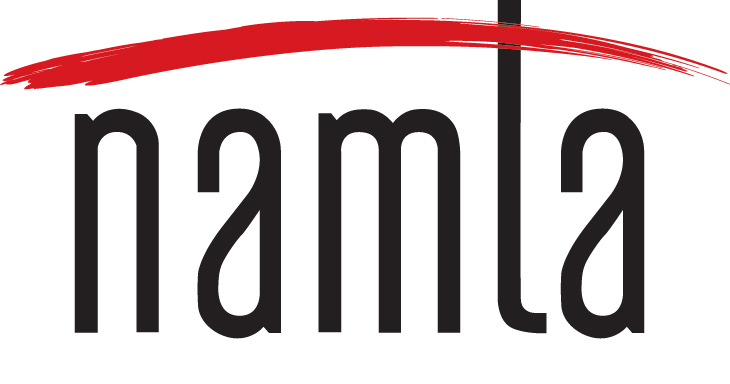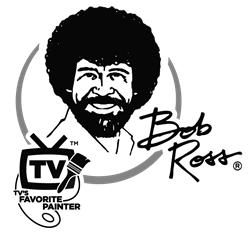Managing Business in the New Normal

Times are different - here is a little history of the first couple of months of the pandemic.
Namta shares information and ideas that we have found with the hope it might be of help or give you an idea.
  
Antibacterial Hand Sanitizers - Infrared Thermometers
Digital Thermometers - Disposable Face Masks
PPE Options from Pulsar
United States and Canada - Discounted options
Please Note:
All information posted below is relevant to the date it was posted.
August 7, 2020
Paycheck Protection Program Information
On August 6th Namta hosted a webinar for members on the Paycheck Protection Program presented by the Accounting Firm, Cherry Bekaert LLP. If you were unable to attend below is a recording and various resources discussed during the presentation.
We are including helpful links from the SBA (U.S. Small Business Administration) for the Loan Forgiveness applications and instructions.
It is advised that you contact your lender regarding the Loan Forgiveness Application as they may require you to go through their system.
paycheck-protection-program-loan-forgiveness-application
paycheck-protection-program-loan-forgiveness-application-instructions-borrowers
paycheck-protection-program-ez-loan-forgiveness-application
paycheck-protection-program-ez-loan-forgiveness-application-instructions-borrowers
This is the most up to date information of this program at the time. As we are all aware, it is an evolving program and we will keep you apprised of any changes arising.
August 3, 2020

This Week's COVID-19 Legislative Reports
COVID-19 Cumulative In-Session State Legislative Report
COVID-19 Cumulative Federal Legislative Report
View major enacted COVID-19 state and federal legislation by visiting our Legislative Action Center.
Built for public affairs, PolicyEngage connects legislative and regulatory tracking, advocate and donor engagement, and media monitoring to create one seamless workflow for your entire team.
Start Automating Your Workflow
You can contact Andrew Marciniak
Sales Operations | PolicyEngage
202-704-5452
JULY 8, 2020
Financial Updates That You Should Know About
Paycheck Protection Program (PPP) and Pandemic Unemployment Assistance (PUA)
 Paycheck Protection Program (PPP) Paycheck Protection Program (PPP)
President Trump on Saturday, July 4th, signed into law a bill extending the PPP-an emergency federal loan facility for small businesses struggling because of the pandemic-for another five weeks until August 8th. The original deadline was June 30th. These applications can be submitted through a bank or online financial institution. This is only a deadline extension and not an opportunity to apply for a second PPP. Of the $650 billion that Congress appropriated for PPP loans, about $130 billion is still available.
Pandemic Unemployment Assistance (PUA)
At this time, the extra $600. of federal weekly unemployment assistance is still currently to expire on July 31,2020. If you are self-employed or Form 1099 independent contractor currently collecting PUA, you may want to consider applying for a PPP loan on August 1st.
Just remember that you cannot collect PUA if you are also paying yourself with a PPP loan during the same covered period. As mentioned above, if you do apply for a PPP on August 1st this will allow you to stagger rather than overlap federal economic relief assistance during this pandemic.
JUNE 24, 2020How to Protect Your Business From COVID-19 Scams
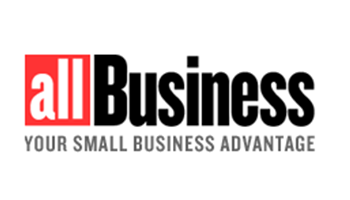
By Larry ZelvinUnfortunately, it is during times of great economic, business, and social uncertainty that we see scams and fraud proliferate and prey on our vulnerabilities. In the age of COVID-19, cyber scams have increased in both frequency and duplicity. Global cyber security experts report a 600 to 800% increase in the number of cyber attacks over the past few weeks, and tens of thousands of COVID-19 related fraudulent websites and mobile applications have emerged.Scammers see a much larger pool of potentially desperate prey, with one group particularly vulnerable: small businesses.Small businesses face challenges like never before, as forces beyond their control upend the economy and their ability to serve existing customers and grow their companies. These owners are making critical decisions every day: Should we reopen when the state or city lifts restrictions? How will we keep our employees, our customers, and ourselves safe when we do open? How do we apply for financial hardship programs and relief from the CARES Act?Amid all of these challenges and weighty decisions is where scammers strike, wreaking havoc when anxiety is already at an all-time high. It is more crucial than ever that small business owners and entrepreneurs remain vigilant and safeguard themselves against preventable scam threats.Here is what you need to know.Scrutinize the source of the communicationRemember the age-old axiom: “If it sounds too good to be true, then it probably is.” This is especially true when it concerns offers of “free government grants” and emails promising “fast and guaranteed approval for your loan today.”Scammers are posing as financial services companies, legal firms, credit bureaus, and more. Some even pretend to be government agencies such as the Small Business Administration (SBA). Business leaders need to routinely validate the source of any email or communication before doing anything else.As a point of reference, many organizations, including the SBA, are transparent on the guidelines dictating how they communicate with small businesses. For example, the SBA will not contact small businesses directly to apply for the Payment Protection Program under the CARES Act, nor will the SBA text or communicate with businesses via social media. If you receive communication from someone claiming to be with the SBA who does not have an email ending in sba.gov, or from someone promising an SBA loan approval contingent on the payment of a high, upfront fee, contact the SBA Office of Inspector General Hotline at 1-800-767-0385.Be selective when sharing personal and business informationDid you know that scammers can make headway with only a few pieces of personal or business data? They can fraudulently apply for grants or loans on behalf of your company, contact your customers or employees pretending to be a company official seeking additional information for business reasons, or exploit the new work-from-home environment to request that you invoice to a new bank account—potentially overseas.Do your research and make sure you not only communicate how you will contact your customers and employees, but also develop a quick action plan for if these attacks occur at your company.
Webinar registration shouldn’t require extensive personal or business data
There are a variety of informative webinars for small businesses that offer advice on how to weather the pandemic. But a webinar registration shouldn’t require extensive identifying information beyond your name, company and email. Registrations asking for more could be a sign of someone trying to obtain information to commit fraud.
Also, be skeptical of webinars that promise small businesses assistance obtaining loans that are contingent on a significant financial payment. Even if the offer sounds helpful, asking for significant fees is a sign of a scam.Unexpected credit score changes are a red flagJust like you would for your personal credit, make a habit of monitoring your business credit. Unexpected changes in your business credit score could mean that someone took out a loan pretending to be you or your company. If you believe this is the case, contact any one of the three national credit bureaus (Equifax, Experian and TransUnion) right away.Quick action will prevent further damage to your credit and lead to a much quicker resolution than if you wait until someone contacts you with bad news.Staying organized and up to date keeps your business safeNow more than ever, financial and administrative housekeeping is critical. Keep all emails and documents related to your grant and loan applications well-organized and in a secure, locked (virtual or physical) location. This degree of preparation will facilitate locating and tracking application information, as well as expedite identifying and reporting fraud should it occur.In addition to keeping your communications organized, it is important to ensure devices and application software programs are up-to-date. Software releases and product updates will often include security fixes that can ultimately help protect you against questionable online activity.
However, be mindful of how those updates and requests are delivered to you. If the request for a software update comes from a suspect email address or through a “pop-up” message that directs you to an unknown or unfamiliar website, then it may be fraudulent.Fast action could mean faster recovery of lost fundsEven the most skeptical individuals and business owners can make mistakes that open them up to a scam. Beyond flagging changes in your credit score to the credit bureaus, it is important that you immediately reach out to your financial institution if you suspect that you or your business are victims of a cyber scam. In most cases, the faster the issue is detected, the higher the probability is that lost funds can be recovered. Your bank can also provide guidance on which authorities to report the scam to if necessary.
Stay vigilant against scamsAs you navigate your business through these extraordinarily challenging times, you are embodying the spirit and grit of American entrepreneurship and small business ownership. Even with all that you’re facing, ensure you remain hyper-vigilant and attentive to the tricks of unscrupulous operators.
JUNE 8, 2020
New for PPP Loan Forgiveness Regulations
These changes will be beneficial for businesses and will help ease the financial burdens because of COVID-19.
 The United States Senate passed by unanimous consent H.R. 7010, the identical bill passed by the House last week to provide much-needed flexibility for Paycheck Protection Program (PPP) borrowers to get their loans fully forgiven. The President has signed this bill into law. The United States Senate passed by unanimous consent H.R. 7010, the identical bill passed by the House last week to provide much-needed flexibility for Paycheck Protection Program (PPP) borrowers to get their loans fully forgiven. The President has signed this bill into law.
Here are the seven key highlights providing additional PPP loan forgiveness flexibility:
- Borrowers will now have the choice to extend the "covered period" of their PPP Loan from the original 8 weeks to up to 24 weeks or through December 31, 2020, whichever comes first. The forgiveness formula on allowable use of funds changes from a minimum of 75% on payroll related expenses and a maximum of 25% on specific overhead expenses to a new formula of 60%-40% respectively.
- For any amount of the PPP loan not forgiven (if applicable), the term of the loan would extend the minimum maturity of the loan from 2 years to 5 years with a maximum maturity of 10 years, still at a low interest rate of 1%.
- Monthly loan repayments on any amount of the loan that is not forgiven (principal+1% interest+fees) would be deferred until SBA compensates your lender for the forgiven amount (about 150 days). If the borrower does not apply for loan forgiveness within 10 months of the last day of the loan's covered period, then the borrower will need to begin monthly loan repayments based on the entire loan amount (principal+1% interest+fees).
- The forgiveness rehire date requiring borrowers to bring back the same number of employees by June 30, 2020, that they had prior to February 15, 2020, will now be extended to on or before December 31, 2020. Forgivable reasons providing amnesty for not being able to rehire the same number of employees will expand to include the inability to comply with COVID-19 sanitation and social distancing guidance from HHS, CDC or OSHA.
- The deadline to apply for a PPP loan would now be extended from June 30, 2020, to December 31, 2020. Please note that because several large companies and chain restaurants recently returned their previously awarded multimillion-dollar PPP loans, there is now more than $130 billion in available funds for eligible nonprofits, companies, and gig workers to apply for PPP loans.
- This legislation also corrected an item in the original CARES ACT and would now allow employers who receive PPP loans to be also eligible to defer payment of the employer's portion of a W-2 employee's 2020 FICA tax so that 50% can be paid in 2021 and 50% in 2022.
- The Treasury Department and SBA will have to quickly amend its Paycheck Protection Program FAQ guidelines and regulations, as well as amend the recently released Borrower's Loan Forgiveness Application.
Please find in the link provided some additional information about the bullet points above that were issued from Namta’s accounting firm.
https://mailchi.mp/cbh/updates-to-paycheck-protection-program-loan-forgiveness?e=b56d823f9e
Also another issue to be aware of…. Two bank lobbying organizations asked Congress this week to automatically forgive any loans less than $150,000 that were disbursed under the Paycheck Protection Program. This article will shed some light on this movement.
https://www.americanbanker.com/news/big-banks-call-for-blanket-forgiveness-of-ppp-loans-under-150-000
JUNE 4, 2020
Big Banks call for Blanket Forgiveness
of PPP Loans Under $150,000
June 02, 2020 - on americanbanker.com
 Two bank lobbying organizations asked Congress on Tuesday to automatically forgive small-business loans of less than $150,000 that are made under the Paycheck Protection Program. Two bank lobbying organizations asked Congress on Tuesday to automatically forgive small-business loans of less than $150,000 that are made under the Paycheck Protection Program.
The request comes as the Senate eyes potential changes to the massive emergency relief effort. Last week, the House of Representatives passed legislation that would make it easier for small businesses to get their PPP loans forgiven. One of its provisions would extend the period of time in which companies must use the funds in order to qualify for forgiveness.The Consumer Bankers Association and the Bank Policy Institute, both of which represent big banks, want Congress to go further. In a letter Thursday to Sen. Marco Rubio, R-Fla., and other key lawmakers, they argued that blanket forgiveness of small loans would save recipients substantial time and money.
Under a $150,000 threshold, some 26% of all PPP loan dollars would qualify for automatic forgiveness, according to the banking trade groups. But 85% of PPP loan recipients would benefit.
“Their time and resources would be better focused on getting the economy safely back up and running, not processing burdensome paperwork,” the banking trade groups wrote.
Blanket loan forgiveness would also help banks. Under the program’s current rules, loans to borrowers who fall short of the standards necessary for forgiveness may remain on banks’ balance sheets. While those loans are government-guaranteed, they have interest rates of just 1%, and banks would have to spend money to service them.
Loans of less than $50,000 in the Paycheck Protection Program can ultimately be expected to cost banks about $500 million, according to an analysis by the consulting firm AQN Strategies. The banking trade groups cited that analysis in their letter Tuesday.
The Paycheck Protection Program, which was enacted in late March, has made approximately $660 billion available to small businesses affected by the coronavirus pandemic.
Under the program’s existing rules, 75% of loan proceeds must be tied to payroll in order to qualify for forgiveness. The House-passed bill would reduce that threshold to 60%.
Senate Majority Leader Mitch McConnnell has reportedly been checking with senators to see if the House bill can get unanimous support in the Senate, which could enable passage as soon as this week.
MAY 29, 2020
IRS Releases Guidance
on Refundable Payroll Tax Credits for Emergency Leave
 Last week, the Internal Revenue Service released a new fact sheet on the refundable tax credits that nonprofits and other employers can claim when paying for sick leave or family and medical leave pursuant to the Families First Coronavirus Response Act. Last week, the Internal Revenue Service released a new fact sheet on the refundable tax credits that nonprofits and other employers can claim when paying for sick leave or family and medical leave pursuant to the Families First Coronavirus Response Act.
The fact sheet address questions about covered employees, sick leave requirements and the credit, how to claim the credits, and recordkeeping.
MAY 28, 2020
 SBA PPP Loan SBA PPP Loan
Application Requirements & Forgiveness Guidance
Presented by Cherry Bekaert LLP
Webinar Video

- To learn more on the highlights of SBA PPP Loan Forgiveness Application, along with considerable guidance recently released, click here.
MAY 26, 2020

Road to Retail Recovery Playbook

The Retail Council of Canada has created a Road to Retail Recovery Playbook to assist retailers in their reopening planning. If you are interested in downloading and saving the 177-page PDF document, click the following link: https://www.retailcouncil.org/coronavirus-info-for-retailers/recovery-playbook/
MAY 20, 2020
5 Ways to Make Your Store VISIBLE During the COVID-19 Shutdown
from KIZER and BENDER's Retail Adventures in the REAL World™
If we have learned anything during the COVID-19 shutdown it’s that you must work hard to stay in front of customers. Just because your brick and mortar store is closed, it doesn’t mean that you can wait it out. Just the opposite. Now is the time to get in your customers faces and stay there. Here’s how:
- Build a team of associates who are well-versed in what you sell, and can be personable even behind a mask. Your front line truly is your bottom line. You need associates who understand what they sell and can easily answer every question customers ask about product and product use. Associate training now has another layer as state and community health and safety guidelines must be met, as well as, continuous product and service training. Each morning gather your team and discuss what’s important that particular day. Create your own training videos and ask vendors about product training classes your team can take online. You can have the best product at the best prices but it’s never going to sell itself. Invest in training your people.
- Bundle. Put together kits or groupings of related product, give each theme a cool name, package it in a fun box, and sell it for one price. $50 or less makes it easy to grab and go.
- Set your sales floor to sell. It’s easy to forgo that basics when you are busy sanitizing the cash wrap 400 times a day, but merchandising isn’t something you can let slide. Each day make sure that your speed bump displays are full and cross-merchandised, that your end features tell a story, the fixtures in your lake front property are used to display that’s new and on trend, and the impulse items at the cash wrap are refreshed often. Shoppers who visit your store are in the mood to buy; make sure your displays encourage them to pause.
- Work your social networks. If you are not yet selling online and on social media, start now. Many retailers are reporting stronger sales online while their stores are closed than what they do on a typical day when the physical store is open. Mimic QVC and host a weekly Facebook Live shopping night that’s geared to sell product. Add additional broadcasts to share techniques and project demos. If you are new to selling online it’s easy to get started with companies like Shopify, BigCommerce and Ecwid.
- Be consistent in your marketing. Your marketing needs to be seen by customers at least seven times before it registers; the more they see your messages the better chance you’ll have to capture their attention and their business. Now is not the time to disappear, it’s time to get busy.
Before this all started it was okay to send email blasts to customers every 10–15 days, but with the COVID-19 shutdown you want to send one each week. Each email should have one clear message that’s illustrated with photos — big photos — and less copy. Link each photo to a page on your website or social media post so shoppers can click for a closer look at that particular product. It should take the reader 20 seconds or less to understand your message — every email blast you send should encourage the customer to make a purchase online ASAP.
Standing out while your store is closed takes focus, consistency, and a lot of elbow grease. Your challenge after COVID-19 will be dealing with the need to continue to sell online while reopening your physical space for business. As much as you’d like, you cannot back off of online selling — you have to have two stores now.
COPYRIGHT KIZER & BENDER | ALL RIGHTS RESERVED | RETAIL ADVENTURES BLOG
This article originally appeared on the American Quilt Retailer’s Virtual Blue Bag. If you are looking for more information to guide you in owning a retail business, American Quilt Retailer Magazine is a great resource, even if you do not own a quilt shop. You will find KIZER & BENDER’s business advice column in each issue.
MAY 17, 2020
Namta Member Still Helping the Healthcare Workers
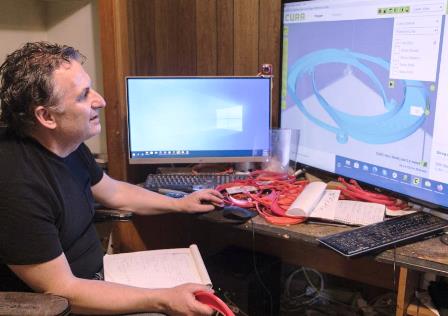
On April 16th we told you about Namta Member Ioan Florea (CAS Paints) and his 3D Masks for Healthcare Workers - updatd - Ioan is still at it, making about 1,400 shields since April, and donating all to Illinois hospitals, including Northwestern Memorial and Mount Sinai-Chicago, HSHS St. John’s-Springfield, HSHS Good Shepherd-Shelbyville and Sarah Bush Lincoln-Mattoon.
Watch this video to see Ioan's process.

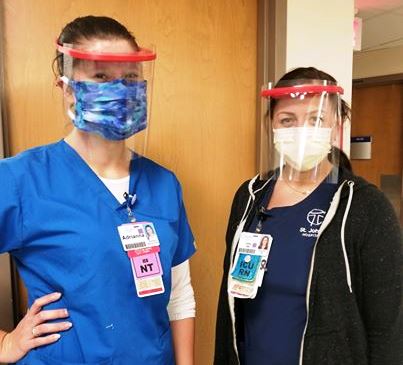
Healthcare Workers at St. Joseph's said, "Thank you Ioan Florea, owner of Florea Art Studio in Shelbyville, for your donation of 100 3D printed face shields. This will help ensure our healthcare workers will continue to be safe while caring for the patients."
READ ENTIRE ARTICLE HERE
May 16, 2020
Retailer List
Updated May 16
Are they open?
Do they have Curbside Pickup?
And More . . .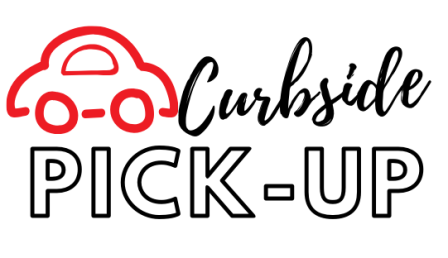
MAY 15, 2020
Firms that took a PPP loan under $2 million are about to get a break
PUBLISHED THU, MAY 14 2020
Darla Mercado @DARLA_MERCADO

KEY POINTS
- The Paycheck Protection Program offers forgivable loans that businesses can use to cover the cost of payroll and other expenses. Borrowers must certify that their entities need the money due to economic uncertainty.
- The Treasury Department and the Small Business Administration now say that businesses borrowing less than $2 million are considered to have made the certification in good faith. They won’t be subject to additional scrutiny.
- Got a loan and thinking of returning the money? Treasury and SBA are giving you more time to return the funds: May 18.
READ THE ENTIRE ARTICLE HERE
MAY 11, 2020
With rent being one of the highest monthly expenses for brick and mortar businesses, it’s a good idea to know what your lease options are and how you can approach your landlords.
Namta Associate Member, ESR Commericial, is a free real estate resource that may be helpful to you, and can guide you through what Tenants and Landlords are doing around the country during COVID-19 and in the future.

ESR presented a Zoom presentation for Namta members on April 30th. We have recorded this very informative presentation to view at your convenience.
ESR's Richard and Garrett Aries are available to answer any questions you may have – they can be contacted by email or phone.
Garrett Aries • 818-519-5040 [email protected]
Richard Aries • 818 - 802-4730 [email protected]
MAY 11, 2020
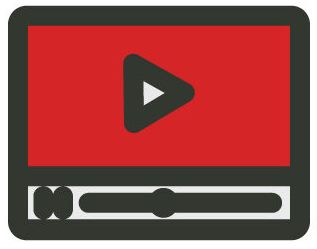
Opening up again . . .
Informative video from Claudia St. John, Affinity HR Group. Ms. St. John speaks about actions that businesses should take into account to open in a safe manner.
Return to Healthy Business Operations Checklist
A comprehensive checklist from NEXSUN/PRUETT for businesses to consider before returning to work and continued measures once you are back in the work environment.
Operation Open Doors Checklist
A checklist from The National Retail Federation (NRF), representing guidance from NRF members and subject matter experts, highlighting key topics to consider as retailers seek to re-open operations.
Go to - PAGE 2
|
